SEO
How to Make Big Commissions
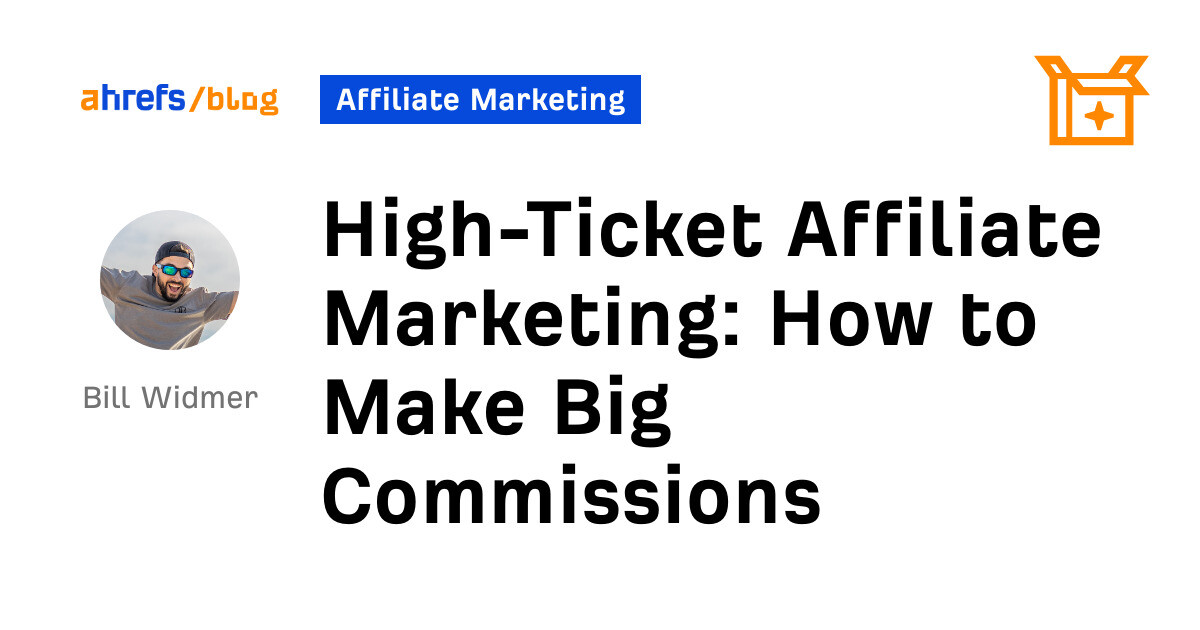
Affiliate marketing can be a lucrative career, with some high-ticket commissions in the hundreds or even thousands of dollars per sale.
I’ve been in the affiliate space for over a decade and even sold an affiliate site for multiple six figures. I’ve learned a lot about what it takes to earn big commissions—and I’m going to teach you how you can do it too.
Below, I discuss what high-ticket affiliate marketing is, how to find high-paying affiliate programs, and mainly how to make big commissions yourself.
High-ticket affiliate marketing is the promotion of products or services with large payouts. A payout becomes “high ticket” once you get above $100 but can go as high as five figures.
It’s a way for affiliate marketers to make more money from fewer sales. Compared to traditional affiliate marketing, you need far less traffic to make bigger sums of money. However, your conversion rate will also typically be much lower.
High-ticket products or services include things like:
- Courses or memberships
- Insurance
- Loans
- Software
- Machinery
- Jewelry
- Electronics
- Heavy metals
- Etc
We examined how much money affiliate marketers make and found that, on average, most affiliate marketers (~57%) make less than $10,000 per year.
However, on the high end, 3.78% of affiliate marketers make over $150,000 per year and an additional 7.94% of affiliates make $100,000–$150,000 per year (according to a study done by the Influencer Marketing Hub).
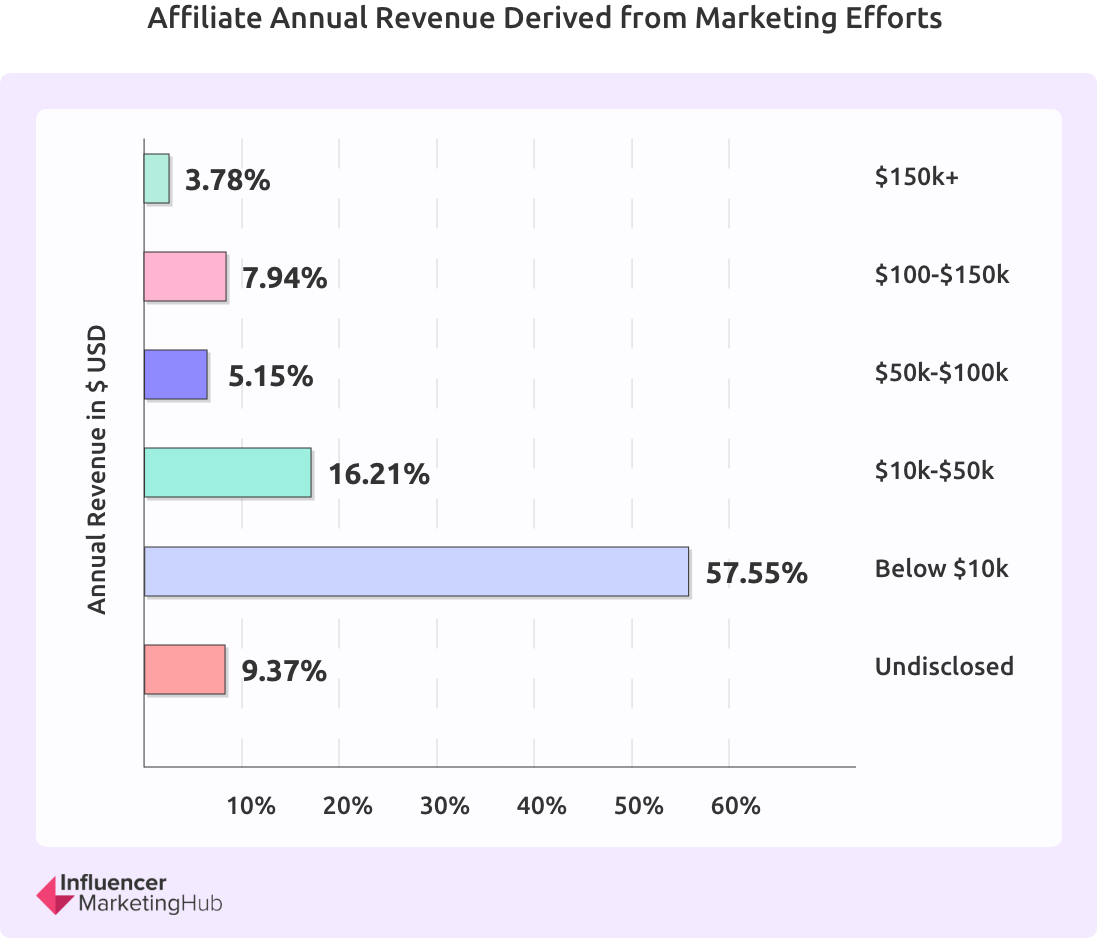
I can say that I personally have made over six figures per year from high-ticket affiliate sales, and I know several others who have done the same.
The study above takes into account all affiliate income, so here are a few specific examples of high-ticket affiliates along with their income:
| Blog | Income | High-ticket products it promotes |
|---|---|---|
| SmartPassiveIncome | $3 million+ annually (source) | ConvertKit and other web software |
| Making Sense of Cents | $1.5 million+ annually (source) | Bluehost (accounted for over $30,000 per month) |
| A Modern Homestead | $120,000+ annually (source) | Home freeze dryer from Harvest Right |
| The Shabby Creek Cottage | $25,000+ per month (source) | Travel software like Tripadvisor |
So where to begin? Let’s dive into how to make big payouts.
1. Find a high-ticket affiliate program to promote
You can find high-ticket affiliate programs through affiliate networks like AvantLink or Impact Radius, among others. Here are some examples of high-paying affiliate programs:
However, the highest-paying programs will typically be found through direct brand partnerships that aren’t necessarily advertised in a network.
If you know of a high-ticket item or service that you like and want to promote, consider calling the company to discuss a partnership.
Half the battle of succeeding in high-ticket affiliate marketing is finding a quality product that’s worth the high price. You need to believe in the product, which is where tip #2 comes in.
2. Focus on building trust and authority
It doesn’t take a genius to sell a $5 product on Amazon (not that there’s anything wrong with Amazon affiliate websites). But if you want someone to buy a product worth thousands on your recommendation, you need them to trust your advice.
Trust is earned in several ways:
- Transparency – You’re legally required to have an affiliate disclaimer on your website. While you can get away with hiding it in the fine print, it’s better to be up front about the fact that you are making a commission on sales.
- Honesty – If a product or service isn’t the best, tell people about it—even if the company pays you big bucks to say otherwise.
- A good “about” page – Tell your readers who you are and why they should trust you. Did you actually use the product? If you’re reviewing batteries, are you an electrician? Show off your qualifications. Better yet, have a video about your brand that shows your face. Let people know you’re a real person with real experience worth listening to.
For example, here’s the “about” page for The Wanderful, where Scott Adamson shows his face and his dog and talks a bit about his expertise (living in a van full time for five years).
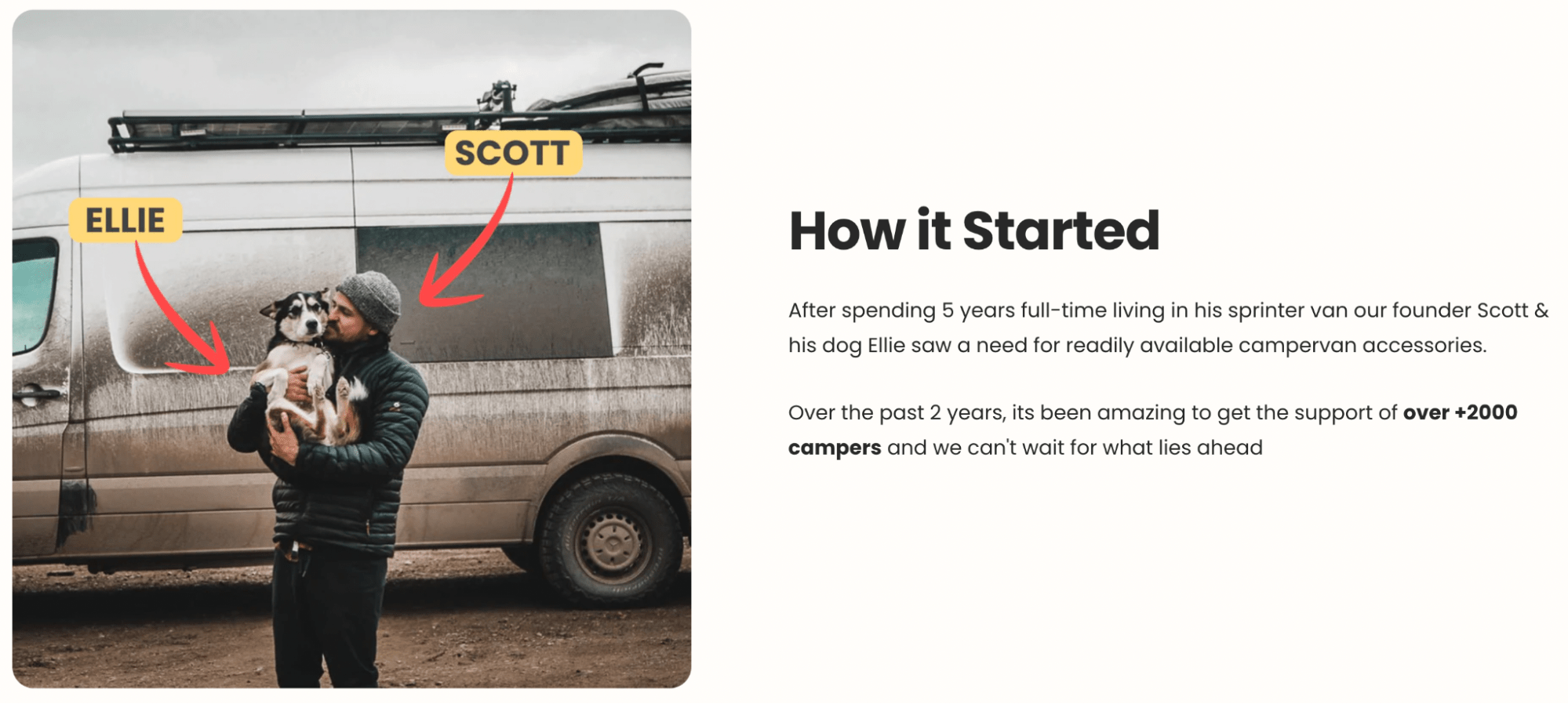
He also has some videos on his “about” page to show that he actually knows what “van lifers” care about and why his products and recommendations are worth listening to.
Not only will these things help you sell expensive products, it will also help with Google’s recent E-E-A-T update (experience, expertise, authoritativeness, and trust). Signaling these attributes generally leads to a better chance at ranking higher in Google’s search results.
3. Build quality backlinks to signal E-E-A-T and rank higher
Most successful affiliate marketers rely on search engines (mainly Google) to drive traffic to their websites and make conversions. And backlinks are one of the most important Google ranking factors that determine how well you rank for a given keyword.
If we circle back to E-E-A-T, Gary Illyes from Google said that backlinks have a huge impact on E-A-T (the former version, excluding experience):
For example, here’s a link to a high-ticket affiliate site from Forbes that signals E-E-A-T:

If you don’t currently have a lot of good backlinks, here are some tactics you can use to start building more:
4. Invest in video
I believe that video builds more trust than words on a page; people trust you more if they can see your face and hands-on experience.
This is true across the board. You can use video to promote products on social media, improve trust on your website, and even to occupy multiple spots on the SERPs.
Ahrefs has done this. Take a look at this SERP, for example:
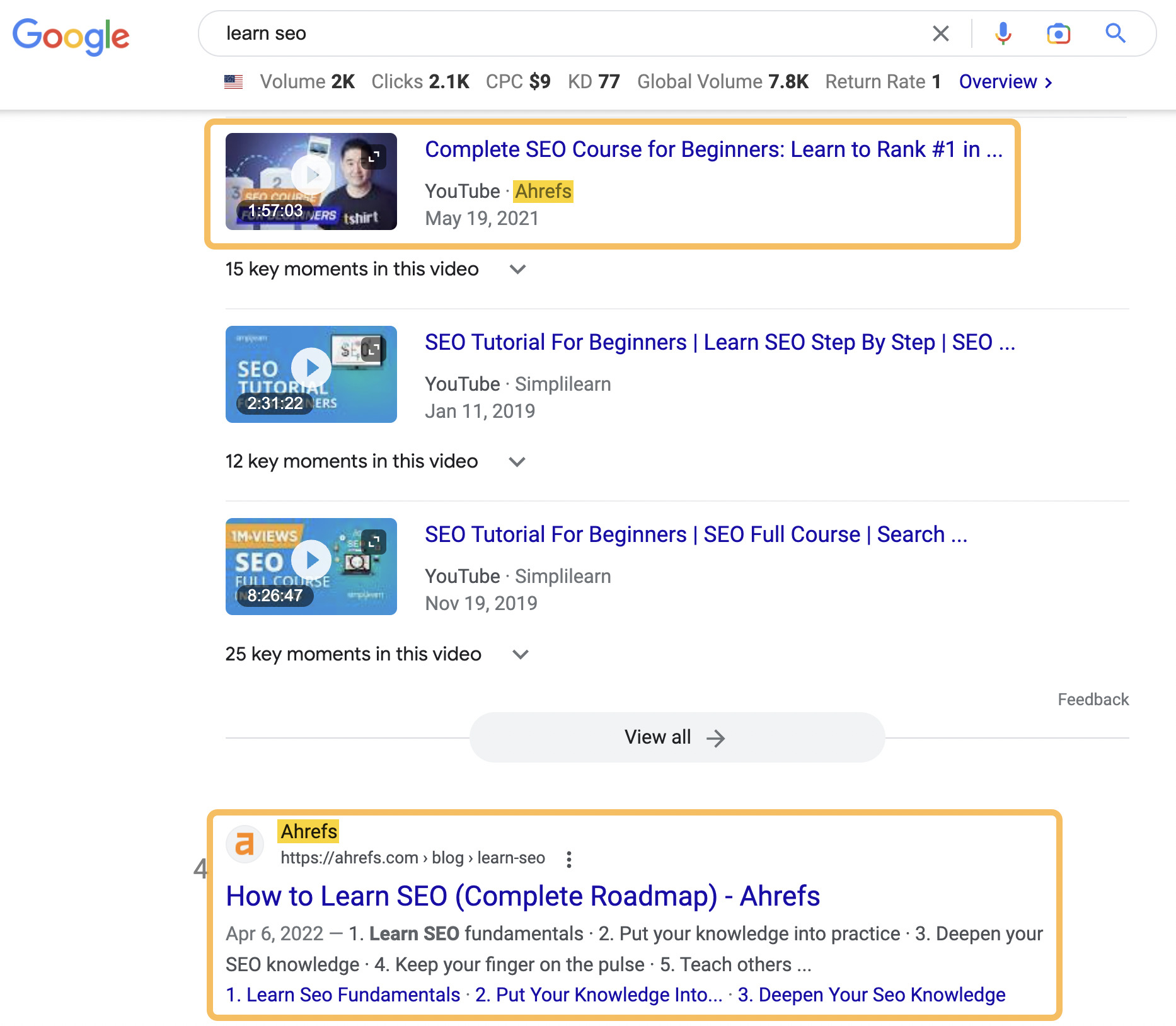
You can see that we were able to rank two pages for the keyword “learn seo”—once with our YouTube video on the topic and again with our blog post on how to learn SEO.
But what about using video as an affiliate marketer?
One of my favorite examples of a high-ticket affiliate marketer using video is Hobotech. He does in-depth reviews of electrical components like solar power stations and batteries.
This video has received nearly half a million views. It promotes a $1,600 product with a 10% commission rate ($160 per sale):
His videos aren’t the fanciest or highest-quality, and they’re long (30+ minutes).
But he is very honest in his videos about what works and what doesn’t and whether or not he recommends you buy it. He goes on to explain things in layman’s terms and rigorously test the batteries, showing everything on camera with his expert feedback. He does a great job at building trust through video.
5. Capture people at different stages of the funnel
As affiliate marketers, we often focus on commercial-intent keywords relating to product reviews or comparisons. However, when it comes to high-ticket items, these keywords are usually extremely competitive and difficult to rank for.
Like the keyword “best health insurance,” which has a KD score of 80, according to Ahrefs’ Keywords Explorer (meaning you’ll need a lot of backlinks to rank on page #1):

Compare that with the keyword “can a doctor treat a family member and bill insurance,” which only has a KD of 1 (meaning you don’t need to care about backlinks to rank on page #1):

In the long run, you’ll build more trust (both with your visitors and with Google) by spreading your content across the entire marketing funnel—i.e., publishing blog posts on topics from when people start being interested to when they’re ready to make a purchase decision.
This way, you’ll also likely end up with more sales over time because you’re capturing people before they get to the buying research stage, allowing you to skip the competition entirely in some cases.
For example, here are keywords someone might search for at different stages in the buyer’s journey while researching kayaks:
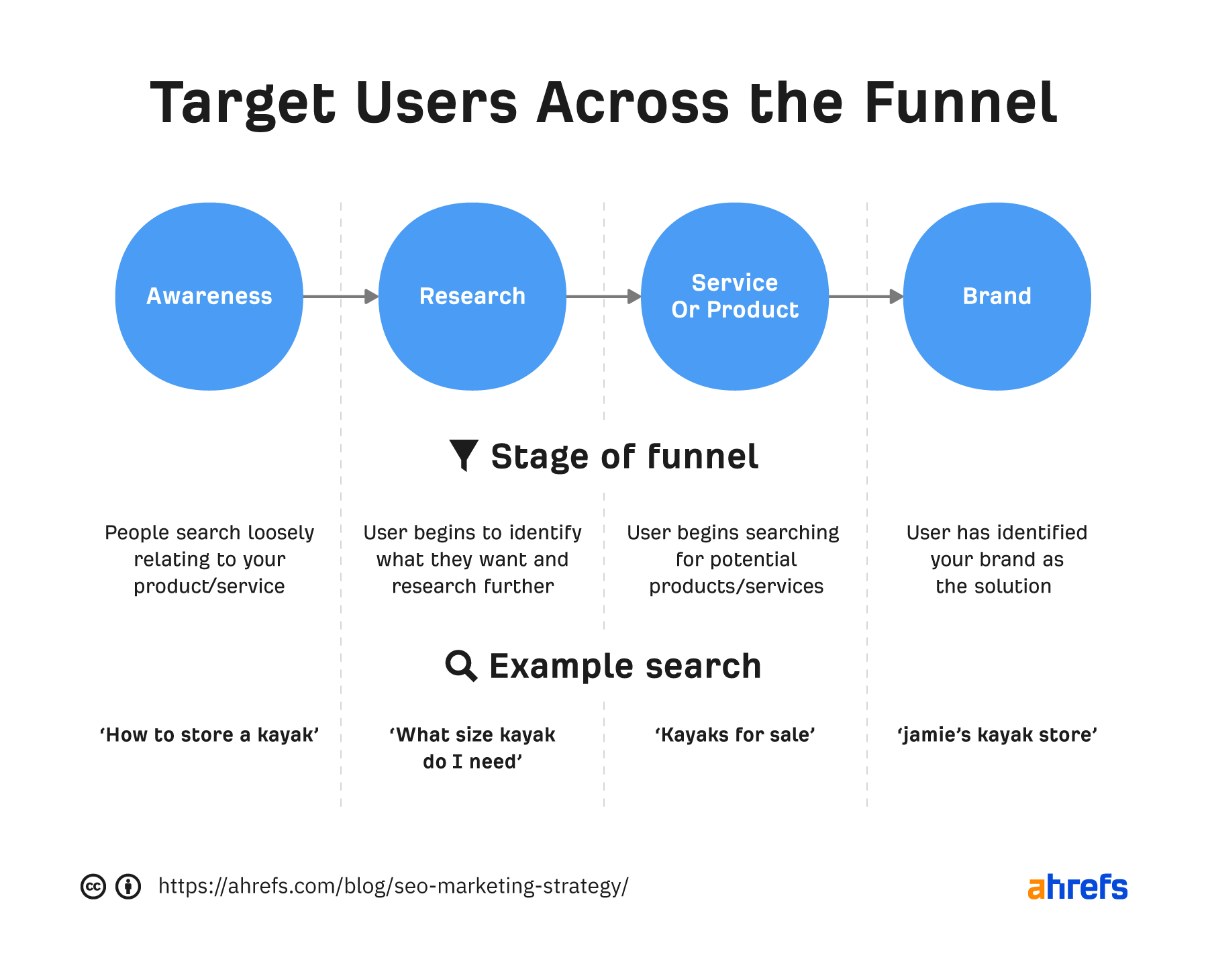
In this case, you can get your brand in front of people long before they’re thinking about buying something. Not only does this build trust, but it also allows you to get these visitors into an email funnel that guides them through the journey from awareness to purchase.
Covering all your bases is especially important for high-ticket items where the competition is fierce and there are fewer potential buyers.
Research suggests it takes anywhere from 28 to 62 (or sometimes even more) “touchpoints” before someone will buy a product. A touchpoint is any time someone sees a brand, whether that’s on a billboard or on your blog.
The number of touchpoints can be even higher for more expensive items, since people need more convincing before they buy.
Of course, not all of the touches need to be done by you. If a company invests a lot in advertising, you only need to be one of the last touchpoints before someone buys in order to make the commission. Most of these affiliate programs have a 30-day or longer cookie.
But the more touches you can contribute, the more sales you’ll ultimately make.
That’s why, in addition to creating content for SEO, you should also grow an email list, be active on multiple social media platforms, and even consider running retargeting ads to get people back to your content so you can be the final touch before someone buys.
The “stickier” your brand is on your followers, the higher the chance you’ll make that glorious high-ticket commission. Get your visitors to follow you on multiple channels and subscribe to your email list to stay at the top of their minds.
6. Only promote quality products
This one’s simple—don’t try to trick people into buying expensive crap that won’t benefit them. It may work in the short term, but it will ruin that trust I keep talking about. If you want a serious long-term business, only promote products you truly find useful and worth the investment.
7. Don’t be afraid to tell people not to buy
Your product may not be for everyone. And by being honest about it, you will actually build more trust and have a higher conversion rate for the people the product will truly benefit.
One of my favorite things about Hobotech, whom I mentioned before, is that he will actually tell you NOT to buy the product he’s promoting or reviewing if it’s not a good fit for you.
Take this video, for example. He mentions who it’s good for and who shouldn’t buy it:
Seeing something in action can make it easier to understand, so here are three affiliate marketing examples of high-earning businesses:
1. Marques Brownlee
Marques Brownlee (MKBHD) started 14 years ago as a kid doing YouTube videos reviewing computers. Since then, he’s grown his channel to over 16 million subscribers—still doing reviews of tech.
He now gets both affiliate deals and sponsorships by reviewing phones, computers, camera gear, VR, and so much more. He’s even had some big names on his channel like Mark Zuckerberg and Elon Musk.
Most of the gear he reviews are hundreds if not thousands of dollars. And people love him because he actually uses all the products on camera and talks about whether it’s truly worth buying or not. He’s spent years building that trust with his audience.
One thing he does that I particularly like is including a link to the gear he’s using to film his videos in the description of every YouTube video he posts:
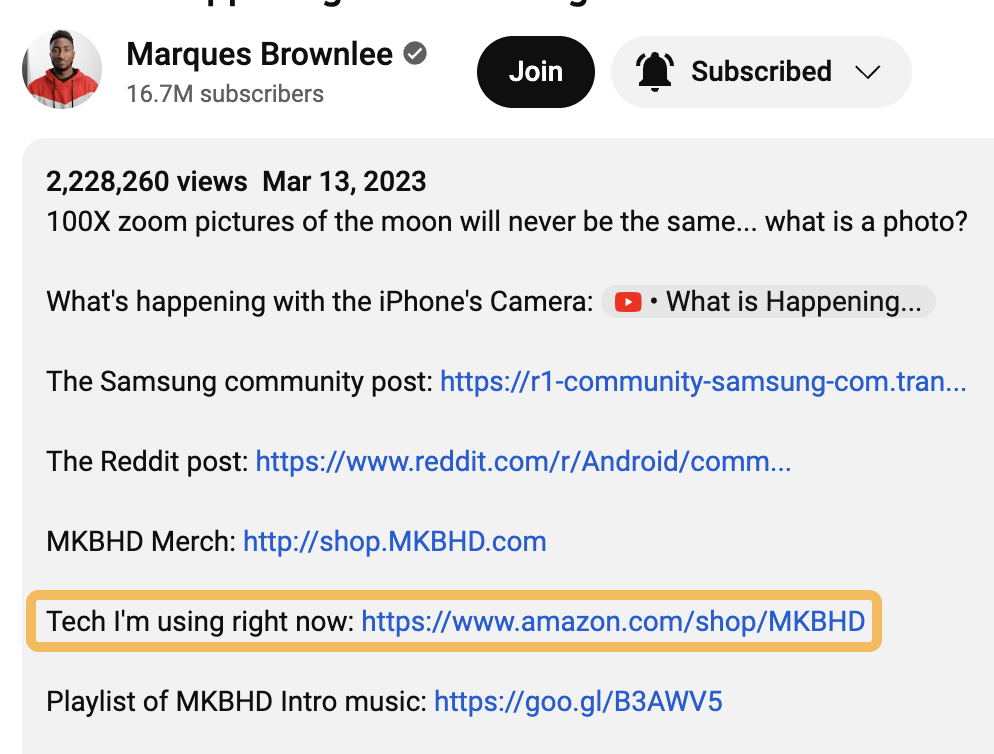
2. Simply Insurance
Simply Insurance is exactly what it sounds like—a website about insurance. Due to the high payouts that insurance companies are willing to pay for potential customers, it can be lucrative.
One of the things that make it unique is that it built custom landing pages for virtually every type of insurance you can buy, with each having high conversion rates:

Building custom landing pages like this and sending your visitors to these pages can be a great way to streamline the process and make more sales.
3. BTOD
BTOD is a blog that reviews expensive computer chairs and electric office desks. Its review posts include extensive details, self-taken photos proving it owns and has tested the products, as well as multiple videos of each product in action.
For example, its review of the Herman Miller Aeron (a $1,400 office chair) includes the following video review:
Final thoughts
High-ticket affiliate marketing is a great way of making more money from fewer sales. If you can find a niche you like that contains expensive products, it can be a lucrative career path.
Just remember to be honest, build trust with your followers, and try to showcase yourself actually using and reviewing the products through videos.
SEO
Measuring Content Impact Across The Customer Journey

Understanding the impact of your content at every touchpoint of the customer journey is essential – but that’s easier said than done. From attracting potential leads to nurturing them into loyal customers, there are many touchpoints to look into.
So how do you identify and take advantage of these opportunities for growth?
Watch this on-demand webinar and learn a comprehensive approach for measuring the value of your content initiatives, so you can optimize resource allocation for maximum impact.
You’ll learn:
- Fresh methods for measuring your content’s impact.
- Fascinating insights using first-touch attribution, and how it differs from the usual last-touch perspective.
- Ways to persuade decision-makers to invest in more content by showcasing its value convincingly.
With Bill Franklin and Oliver Tani of DAC Group, we unravel the nuances of attribution modeling, emphasizing the significance of layering first-touch and last-touch attribution within your measurement strategy.
Check out these insights to help you craft compelling content tailored to each stage, using an approach rooted in first-hand experience to ensure your content resonates.
Whether you’re a seasoned marketer or new to content measurement, this webinar promises valuable insights and actionable tactics to elevate your SEO game and optimize your content initiatives for success.
View the slides below or check out the full webinar for all the details.
SEO
How to Find and Use Competitor Keywords

Competitor keywords are the keywords your rivals rank for in Google’s search results. They may rank organically or pay for Google Ads to rank in the paid results.
Knowing your competitors’ keywords is the easiest form of keyword research. If your competitors rank for or target particular keywords, it might be worth it for you to target them, too.
There is no way to see your competitors’ keywords without a tool like Ahrefs, which has a database of keywords and the sites that rank for them. As far as we know, Ahrefs has the biggest database of these keywords.
How to find all the keywords your competitor ranks for
- Go to Ahrefs’ Site Explorer
- Enter your competitor’s domain
- Go to the Organic keywords report
The report is sorted by traffic to show you the keywords sending your competitor the most visits. For example, Mailchimp gets most of its organic traffic from the keyword “mailchimp.”


Since you’re unlikely to rank for your competitor’s brand, you might want to exclude branded keywords from the report. You can do this by adding a Keyword > Doesn’t contain filter. In this example, we’ll filter out keywords containing “mailchimp” or any potential misspellings:


If you’re a new brand competing with one that’s established, you might also want to look for popular low-difficulty keywords. You can do this by setting the Volume filter to a minimum of 500 and the KD filter to a maximum of 10.


How to find keywords your competitor ranks for, but you don’t
- Go to Competitive Analysis
- Enter your domain in the This target doesn’t rank for section
- Enter your competitor’s domain in the But these competitors do section


Hit “Show keyword opportunities,” and you’ll see all the keywords your competitor ranks for, but you don’t.


You can also add a Volume and KD filter to find popular, low-difficulty keywords in this report.


How to find keywords multiple competitors rank for, but you don’t
- Go to Competitive Analysis
- Enter your domain in the This target doesn’t rank for section
- Enter the domains of multiple competitors in the But these competitors do section


You’ll see all the keywords that at least one of these competitors ranks for, but you don’t.


You can also narrow the list down to keywords that all competitors rank for. Click on the Competitors’ positions filter and choose All 3 competitors:


- Go to Ahrefs’ Site Explorer
- Enter your competitor’s domain
- Go to the Paid keywords report


This report shows you the keywords your competitors are targeting via Google Ads.
Since your competitor is paying for traffic from these keywords, it may indicate that they’re profitable for them—and could be for you, too.
You know what keywords your competitors are ranking for or bidding on. But what do you do with them? There are basically three options.
1. Create pages to target these keywords
You can only rank for keywords if you have content about them. So, the most straightforward thing you can do for competitors’ keywords you want to rank for is to create pages to target them.
However, before you do this, it’s worth clustering your competitor’s keywords by Parent Topic. This will group keywords that mean the same or similar things so you can target them all with one page.
Here’s how to do that:
- Export your competitor’s keywords, either from the Organic Keywords or Content Gap report
- Paste them into Keywords Explorer
- Click the “Clusters by Parent Topic” tab


For example, MailChimp ranks for keywords like “what is digital marketing” and “digital marketing definition.” These and many others get clustered under the Parent Topic of “digital marketing” because people searching for them are all looking for the same thing: a definition of digital marketing. You only need to create one page to potentially rank for all these keywords.


2. Optimize existing content by filling subtopics
You don’t always need to create new content to rank for competitors’ keywords. Sometimes, you can optimize the content you already have to rank for them.
How do you know which keywords you can do this for? Try this:
- Export your competitor’s keywords
- Paste them into Keywords Explorer
- Click the “Clusters by Parent Topic” tab
- Look for Parent Topics you already have content about
For example, if we analyze our competitor, we can see that seven keywords they rank for fall under the Parent Topic of “press release template.”


If we search our site, we see that we already have a page about this topic.


If we click the caret and check the keywords in the cluster, we see keywords like “press release example” and “press release format.”


To rank for the keywords in the cluster, we can probably optimize the page we already have by adding sections about the subtopics of “press release examples” and “press release format.”
3. Target these keywords with Google Ads
Paid keywords are the simplest—look through the report and see if there are any relevant keywords you might want to target, too.
For example, Mailchimp is bidding for the keyword “how to create a newsletter.”


If you’re ConvertKit, you may also want to target this keyword since it’s relevant.
If you decide to target the same keyword via Google Ads, you can hover over the magnifying glass to see the ads your competitor is using.


You can also see the landing page your competitor directs ad traffic to under the URL column.


Learn more
Check out more tutorials on how to do competitor keyword analysis:
SEO
Google Confirms Links Are Not That Important

Google’s Gary Illyes confirmed at a recent search marketing conference that Google needs very few links, adding to the growing body of evidence that publishers need to focus on other factors. Gary tweeted confirmation that he indeed say those words.
Background Of Links For Ranking
Links were discovered in the late 1990’s to be a good signal for search engines to use for validating how authoritative a website is and then Google discovered soon after that anchor text could be used to provide semantic signals about what a webpage was about.
One of the most important research papers was Authoritative Sources in a Hyperlinked Environment by Jon M. Kleinberg, published around 1998 (link to research paper at the end of the article). The main discovery of this research paper is that there is too many web pages and there was no objective way to filter search results for quality in order to rank web pages for a subjective idea of relevance.
The author of the research paper discovered that links could be used as an objective filter for authoritativeness.
Kleinberg wrote:
“To provide effective search methods under these conditions, one needs a way to filter, from among a huge collection of relevant pages, a small set of the most “authoritative” or ‘definitive’ ones.”
This is the most influential research paper on links because it kick-started more research on ways to use links beyond as an authority metric but as a subjective metric for relevance.
Objective is something factual. Subjective is something that’s closer to an opinion. The founders of Google discovered how to use the subjective opinions of the Internet as a relevance metric for what to rank in the search results.
What Larry Page and Sergey Brin discovered and shared in their research paper (The Anatomy of a Large-Scale Hypertextual Web Search Engine – link at end of this article) was that it was possible to harness the power of anchor text to determine the subjective opinion of relevance from actual humans. It was essentially crowdsourcing the opinions of millions of website expressed through the link structure between each webpage.
What Did Gary Illyes Say About Links In 2024?
At a recent search conference in Bulgaria, Google’s Gary Illyes made a comment about how Google doesn’t really need that many links and how Google has made links less important.
Patrick Stox tweeted about what he heard at the search conference:
” ‘We need very few links to rank pages… Over the years we’ve made links less important.’ @methode #serpconf2024″
Google’s Gary Illyes tweeted a confirmation of that statement:
“I shouldn’t have said that… I definitely shouldn’t have said that”
Why Links Matter Less
The initial state of anchor text when Google first used links for ranking purposes was absolutely non-spammy, which is why it was so useful. Hyperlinks were primarily used as a way to send traffic from one website to another website.
But by 2004 or 2005 Google was using statistical analysis to detect manipulated links, then around 2004 “powered-by” links in website footers stopped passing anchor text value, and by 2006 links close to the words “advertising” stopped passing link value, links from directories stopped passing ranking value and by 2012 Google deployed a massive link algorithm called Penguin that destroyed the rankings of likely millions of websites, many of which were using guest posting.
The link signal eventually became so bad that Google decided in 2019 to selectively use nofollow links for ranking purposes. Google’s Gary Illyes confirmed that the change to nofollow was made because of the link signal.
Google Explicitly Confirms That Links Matter Less
In 2023 Google’s Gary Illyes shared at a PubCon Austin that links were not even in the top 3 of ranking factors. Then in March 2024, coinciding with the March 2024 Core Algorithm Update, Google updated their spam policies documentation to downplay the importance of links for ranking purposes.
The documentation previously said:
“Google uses links as an important factor in determining the relevancy of web pages.”
The update to the documentation that mentioned links was updated to remove the word important.
Links are not just listed as just another factor:
“Google uses links as a factor in determining the relevancy of web pages.”
At the beginning of April Google’s John Mueller advised that there are more useful SEO activities to engage on than links.
Mueller explained:
“There are more important things for websites nowadays, and over-focusing on links will often result in you wasting your time doing things that don’t make your website better overall”
Finally, Gary Illyes explicitly said that Google needs very few links to rank webpages and confirmed it.
I shouldn’t have said that… I definitely shouldn’t have said that
— Gary 鯨理/경리 Illyes (so official, trust me) (@methode) April 19, 2024
Why Google Doesn’t Need Links
The reason why Google doesn’t need many links is likely because of the extent of AI and natural language undertanding that Google uses in their algorithms. Google must be highly confident in its algorithm to be able to explicitly say that they don’t need it.
Way back when Google implemented the nofollow into the algorithm there were many link builders who sold comment spam links who continued to lie that comment spam still worked. As someone who started link building at the very beginning of modern SEO (I was the moderator of the link building forum at the #1 SEO forum of that time), I can say with confidence that links have stopped playing much of a role in rankings beginning several years ago, which is why I stopped about five or six years ago.
Read the research papers
Authoritative Sources in a Hyperlinked Environment – Jon M. Kleinberg (PDF)
The Anatomy of a Large-Scale Hypertextual Web Search Engine
Featured Image by Shutterstock/RYO Alexandre
-

 PPC4 days ago
PPC4 days ago19 Best SEO Tools in 2024 (For Every Use Case)
-

 MARKETING7 days ago
MARKETING7 days agoWill Google Buy HubSpot? | Content Marketing Institute
-
SEARCHENGINES7 days ago
Daily Search Forum Recap: April 16, 2024
-

 SEO7 days ago
SEO7 days agoGoogle Clarifies Vacation Rental Structured Data
-

 MARKETING6 days ago
MARKETING6 days agoStreamlining Processes for Increased Efficiency and Results
-
SEARCHENGINES6 days ago
Daily Search Forum Recap: April 17, 2024
-

 SEO6 days ago
SEO6 days agoAn In-Depth Guide And Best Practices For Mobile SEO
-

 PPC6 days ago
PPC6 days ago97 Marvelous May Content Ideas for Blog Posts, Videos, & More














